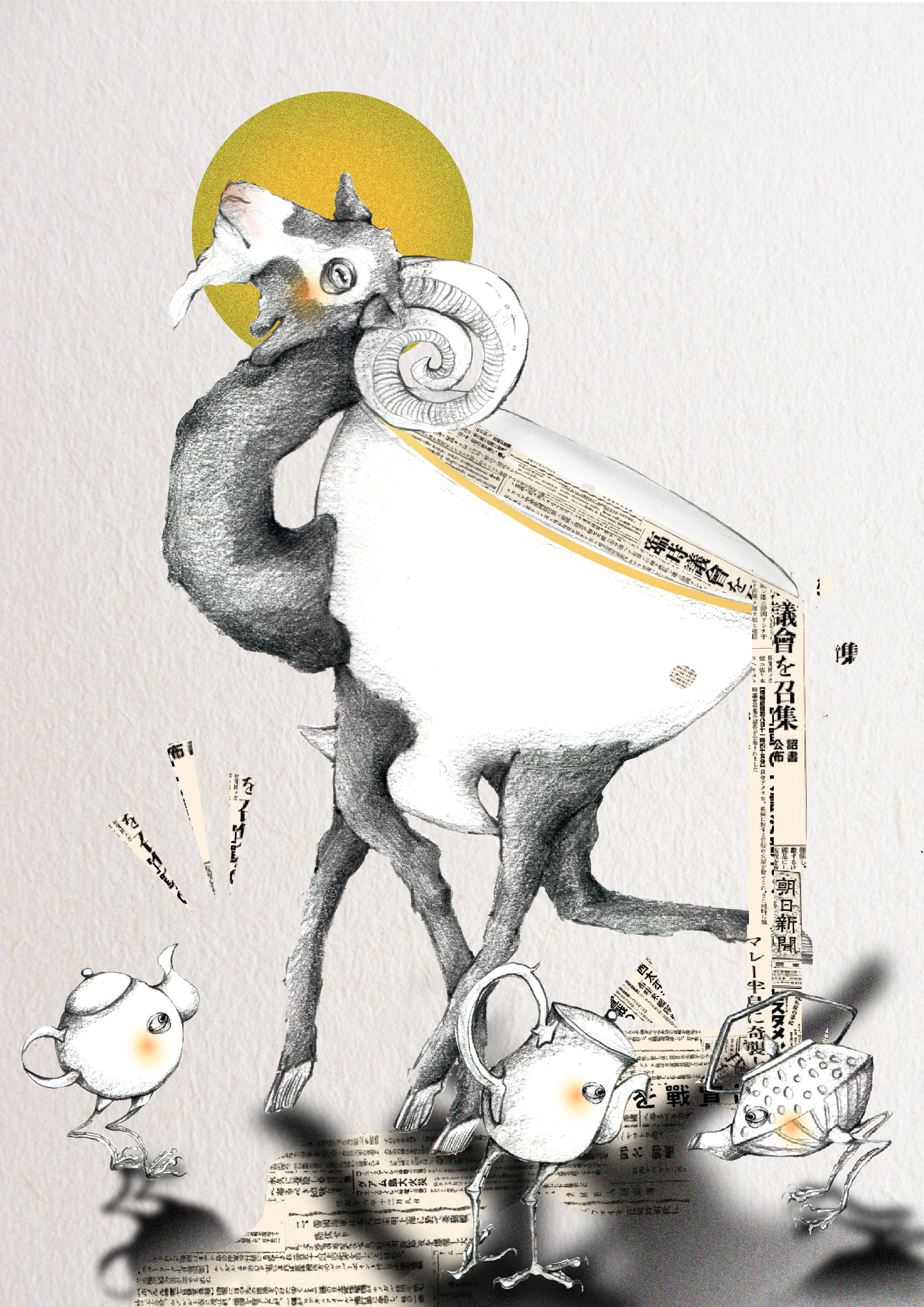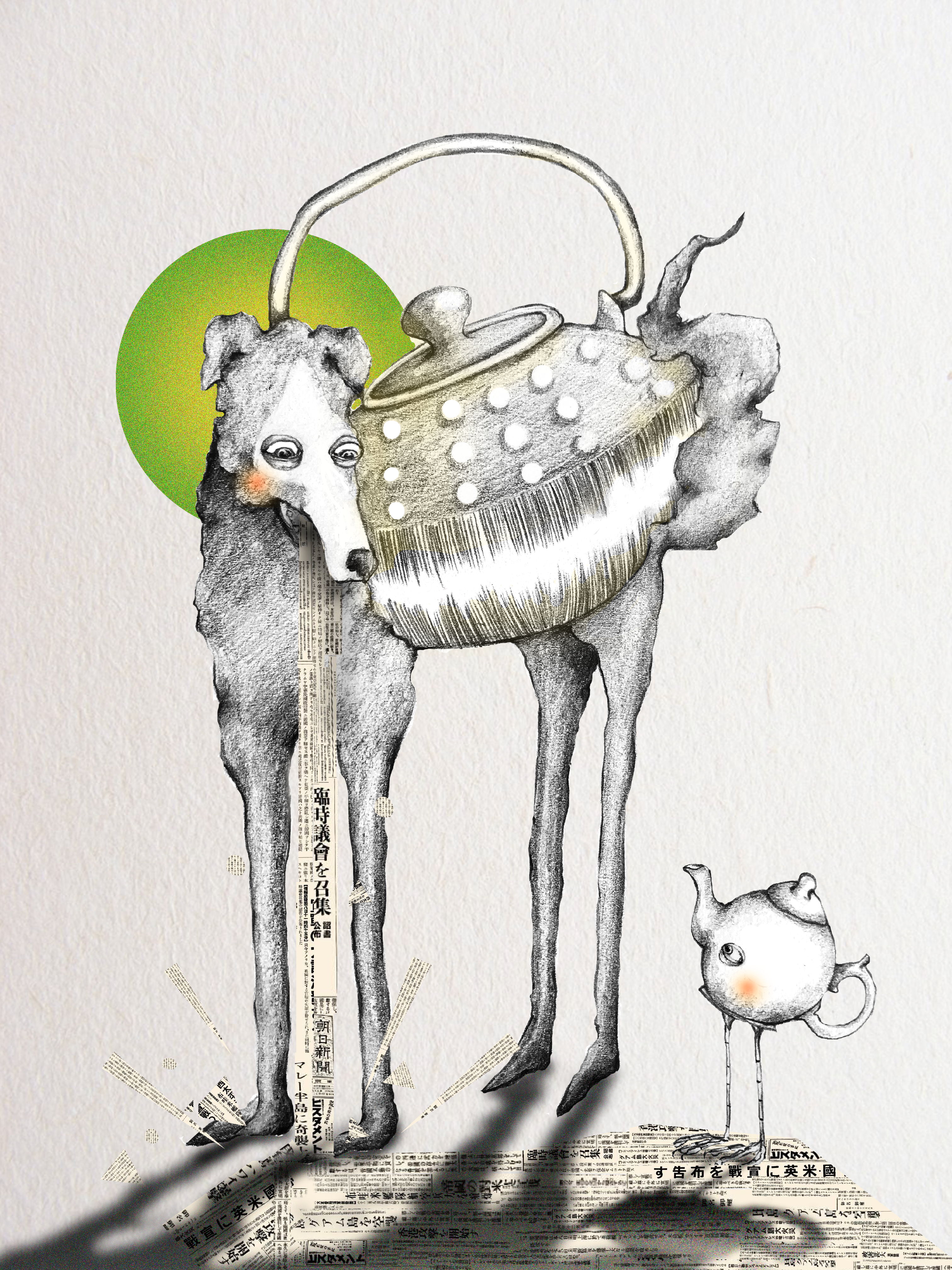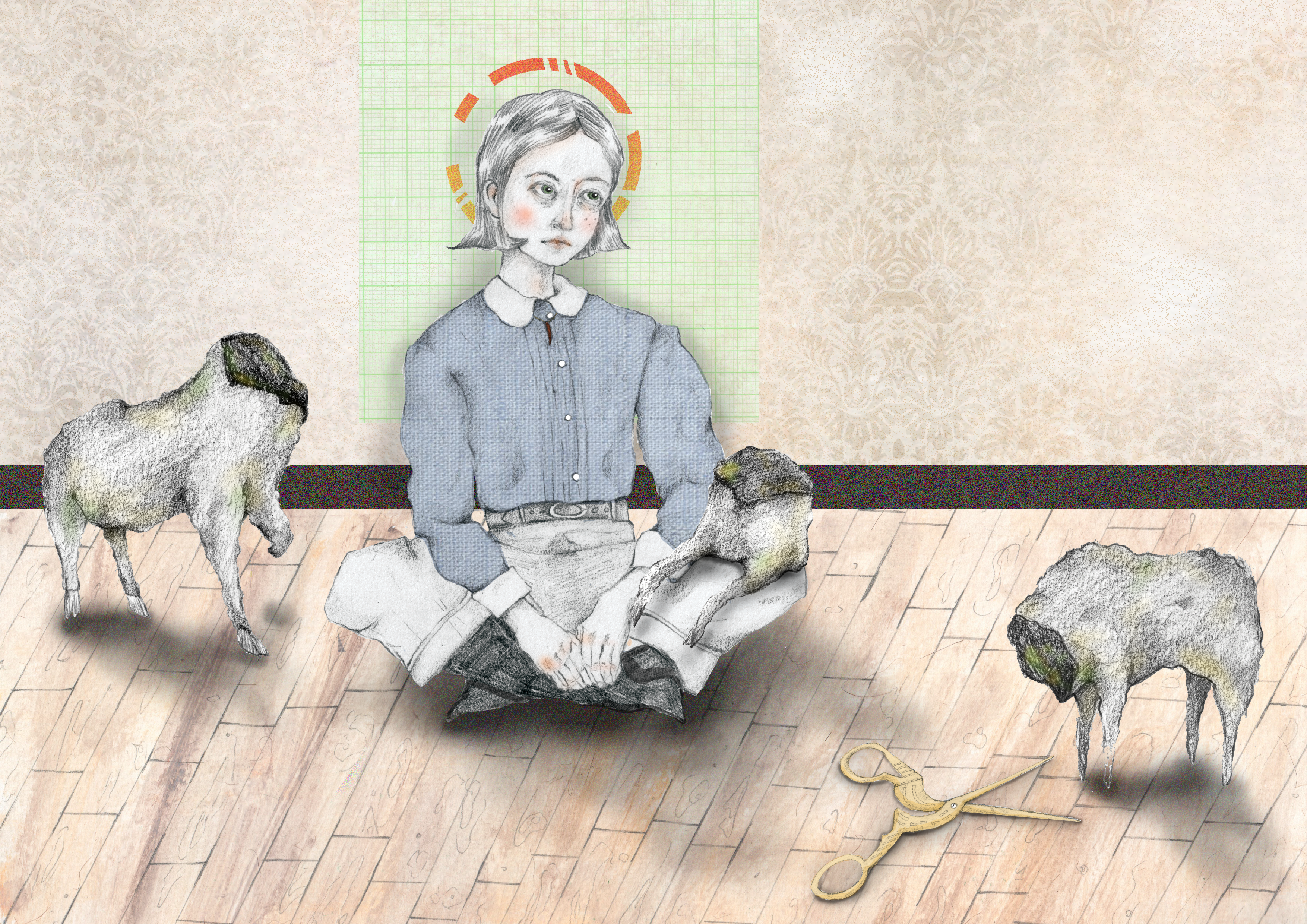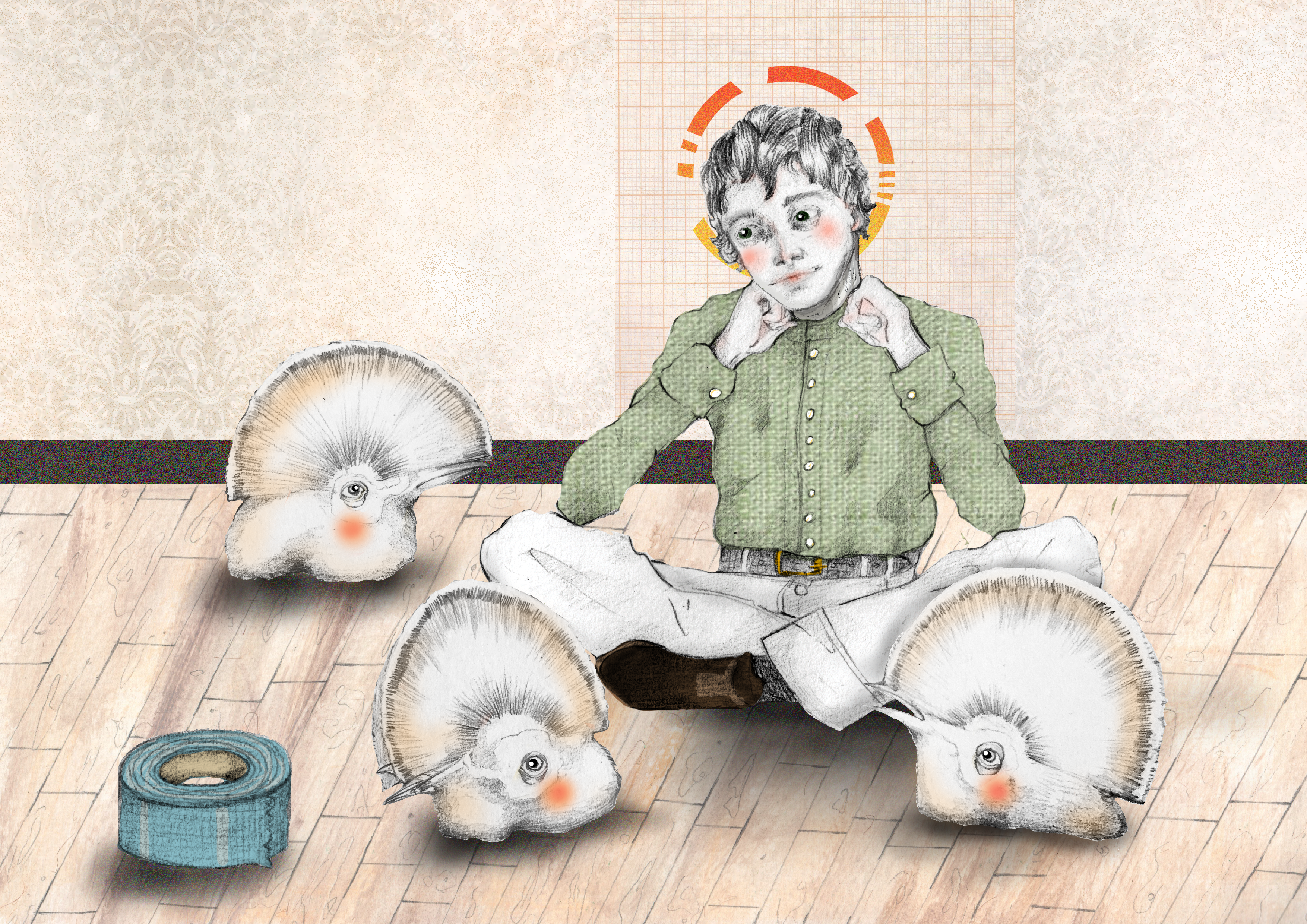It is a common occurrence that during the artistic process, the lines between the author-as-person and the author-as-artist become blurred. More often than not, visual constructions become personal allegories to emotional journeys. This is the case with Nina Fisher’s work, a third-year Illustration student at the University of Brighton. In this interview, we explored her approach to art as a form of therapy, and its relationship to surrealism. We also discussed the material importance of analogue work, and the creative relationship she has with her father.
A lot of your work seems to be tainted by surrealist elements, why is this?
This mainly revolves around the way in which I create my work. Since I draw through free associations, the elements I put together often lead to the creation of bizarre, dream-like images. For me, surrealism is simply a working method; an approach that follows pure instinct and spontaneity instead of careful planning and research. You could say it’s an ‘inverted’ approach; instead of starting with a message and theme, I start with the creation of the image, and it’s only afterwards that its meaning is uncovered.
Another thing that draws me to surrealism is that its vagueness allows people to attribute their own meanings to the work. In a way it’s similar to Rocher’s ink block. An example of this is my piece titled Rumours. Initially, I just wanted to do an illustration about badgers, and the theme that I wanted to get across was that of conflict. Interestingly enough, after I showed it to some people they said that it seemed to have a political message; and that’s when I decided to title it Rumours. It is fascinating to me how pieces change, evolve and mutate according to the viewer. That’s why I often give titles to my pieces only after quite a long time. I need to reflect on them, and come back only until I have discovered their true meaning.
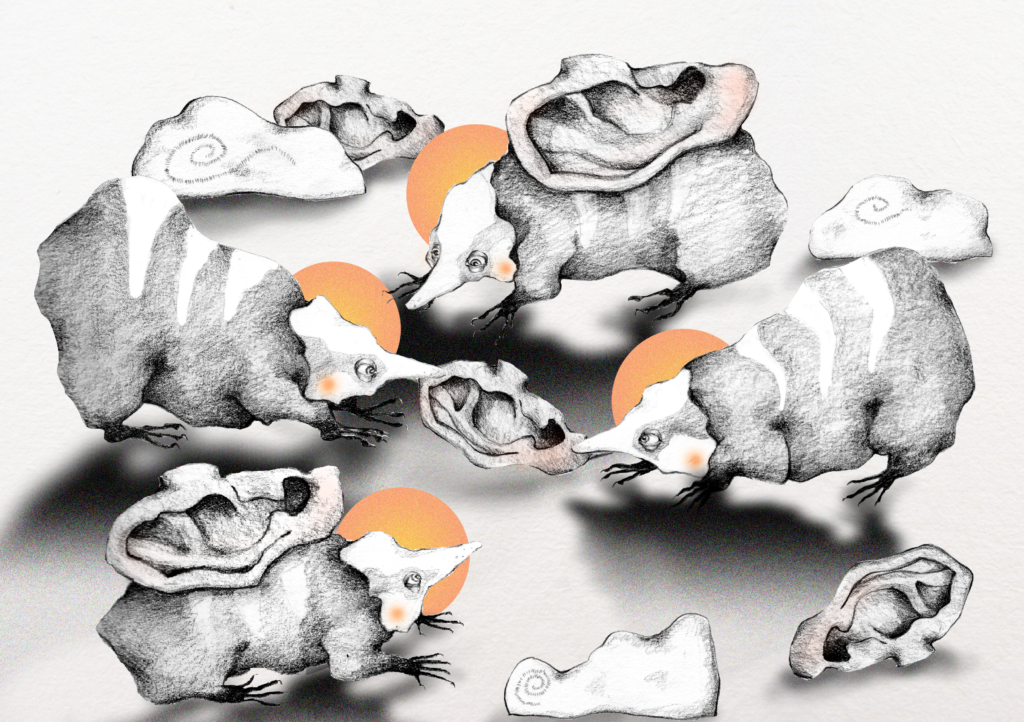
Tell me about the process behind the making of your piece Freudian Dreamscapes?
Freudian Dreamscapes started as an oil painting but eventually it evolved into a collage in which I mixed graphite on paper and photography. When I started the illustration, I didn’t have any specific intentions in mind, I simply wanted to create a painting depicting two human characters.
However, once I finished the painting, I stepped back and noticed that it had become much more than that. Since I follow a stream-of-consciousness approach when I’m working, I often end up noticing my own ulterior motives only until after the piece is finished. This was the case with Freudian Dreamscapes. The use of eels and sea snakes –phallic elements, which are recurring symbols in my art– was ultimately an allegory to my conflict with sexual intercourse.
Not being particularly good with words, uncomfortable issues are hard for me to talk about, so by visualising them through my work, I am able to exteriorise them. Painting then becomes a form of therapy, and the associations between the elements in the painting help me realise what is bothering me emotionally. In fact, for Freudian Dreamscapes, I used a photograph of myself and my partner, and now I recognise how appropriate that was.
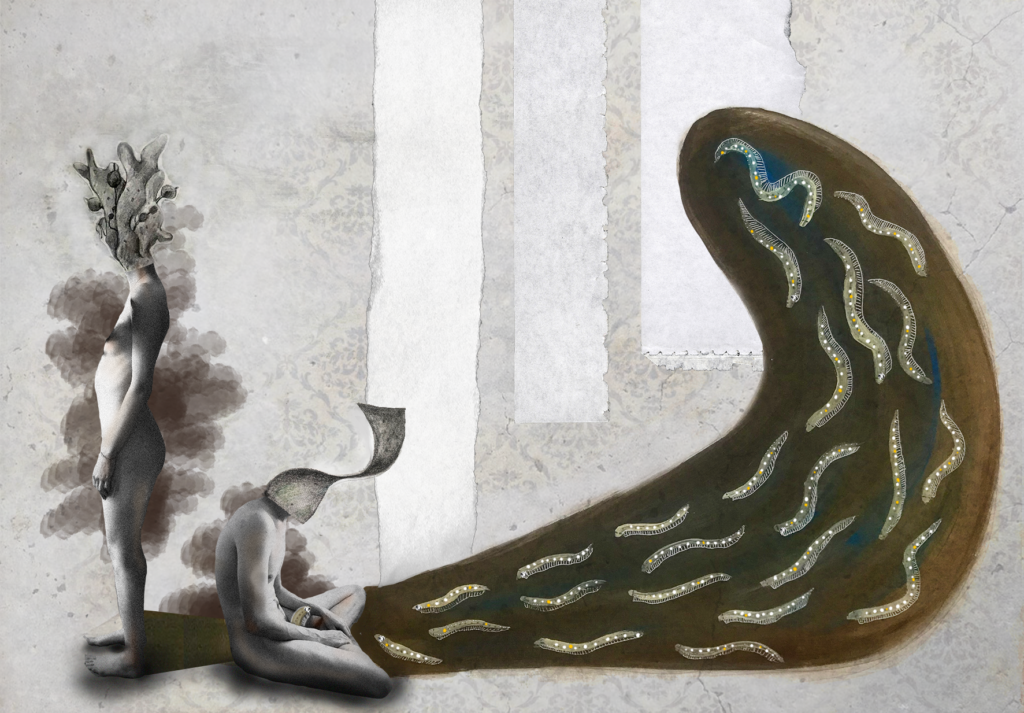
What is your technique like? How does the physical aspect of the materials play a part in it?
Since I end up blending a lot of different things, I’m not sure what term to use when describing my technique. Currently, because of time management, I have moved my practice to the digital realm. However, I try not to rely entirely on digital work, as it always felt to me as if it lacked something; it feels too polished, and I actually enjoy the texture and roughness of the paper. So, the strategy that works for me is to work by blending both mediums: I start with a very traditional pencil draft, then I draw everything on different sheets of paper. Afterwards, I scan and digitize them. Finally, I arrange them using Photoshop. The digital aspect allows me to test out different compositions and layouts, whilst the analogue aspect allows me to keep the material qualities such as the texture. For me, a capable artist is whoever is able to adapt their process, and find a way of working that is unexpected for the viewer.
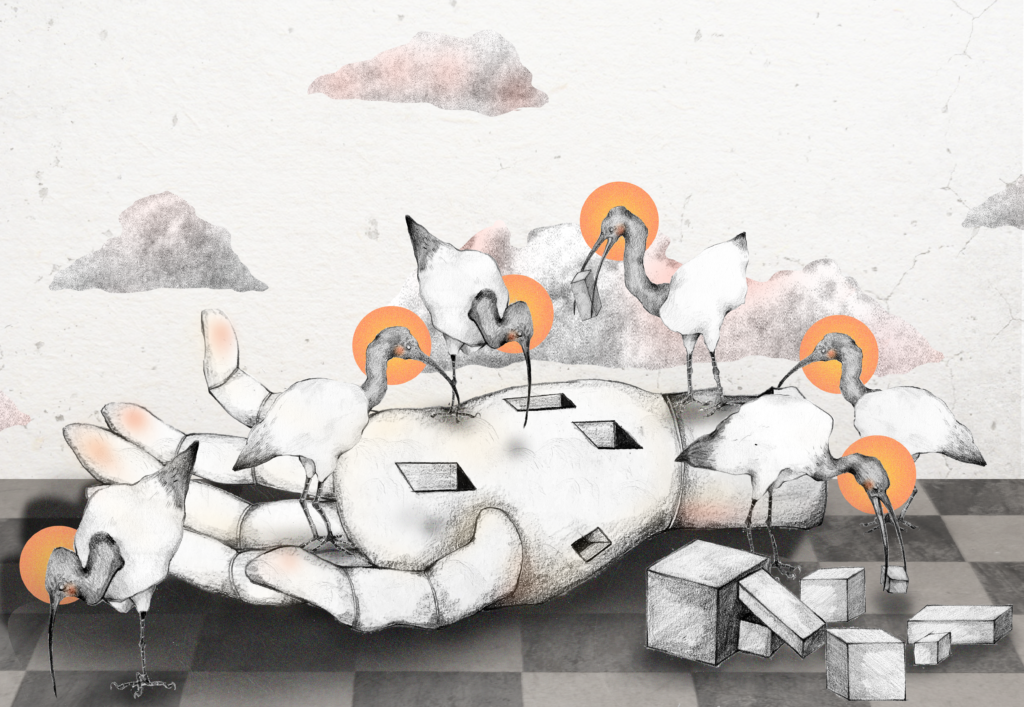
What are your main sources of inspiration?
One is symbolism. I discovered the book “The Dictionary of Symbols” by J.C. Cooper when I was a teenager and I have always sourced ideas from it. Symbols are a universal language; images can be understood by everyone, and they can be translated back into words. Ultimately, they are useful visual words.
Another inspiration is train journeys. In first year, I used to commute every day from Hastings to Brighton, it was an hour and a half long journey, and I used to get the best ideas there.
Finally, my father’s music. He’s a composer, he plays the piano and he has released a few CDs and every time I listen to his music I get ideas. I always get very relaxed and as a consequence, the blocks in my head get liberated. Me and my dad are very similar, we got the same sensibilities but he is way more on the sound side of things, and I’m more on the visual side, but we somehow share very similar perspectives, so we end up inspiring each other, which can be quite interesting. For this reason, I’ve done the artwork for all of his albums. Currently, I’m working on his latest one, which comes out in Kyoto next winter. These collaborations always turn out really well.
What do you hope to achieve in the following year?
I would love to get my work out there. A big fear of mine is not being able to find an audience. Before moving to Brighton, I studied in an art school in Milan, which had a very traditional approach, so when I moved here, I noticed that it was the opposite of what I was used to. The approach to art here is very playful, colourful and cheerful, and since my work is not like that, I always felt a bit out of place, and a bit insecure. I did try to adapt my work to Brighton’s visual landscape, but that style just didn’t sit right with me. So, now that I’ve embraced my own style, I’m hoping that I’ll be able to find my ‘niche’ – a place where I can share my work, my own community.
This summer I also worked on a children’s book titled “A Snail Story”. It was such a fulfilling experience to have made a book from nothing and then see it finished as a final project. So I’m hoping that I can work on more projects like that in the future.
To see more of Nina’s work…
Website: https://www.ninafisher.net/
Instagram: @ninaf_illustration
Email: ninacfisher@gmail.com


